#francesco queirolo
Text





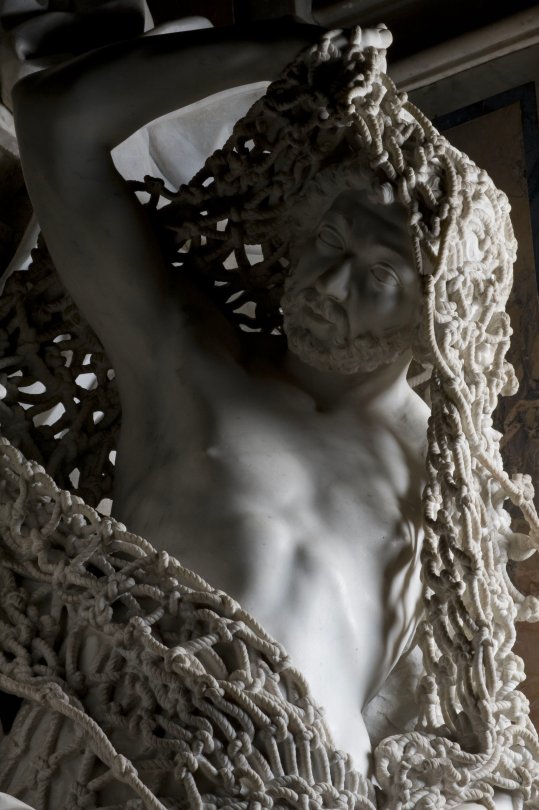

"The Release from Deception,"
Carved from a single block of marble, it depicts a fisherman being released from netting by an angel, allegorical to the man being liberated from his sins.
So intricate was the work that 18th-century philosopher Giangiuseppe Origlia described it as “the last and most trying test to which sculpture in marble can aspire.”
Queirolo worked alone on his magnum opus, without an assistant or even a workshop. Even other sculptors refused to touch the delicate net in case it broke into pieces in their hands.
The masterpiece is housed at the Sansevero Chapel in Naples, with several other miracles of marble. Namely, "The Veiled Christ" (1753) by Giuseppe Sanmartino and "The Veiled Truth" (1750) by Antonio Corradini.
Francesco Queirolo (1752-1759)
Credit: @Culture_Crit
#art#history#style#sculpture#marble#hand carved#sins#net#masterpiece#italy#naple#francesco queirolo#17th century#18th century#fisherman#allegory#angel#Culture_Crit
1K notes
·
View notes
Text

The intricate net of "The Release from Deception" - Francesco Queirolo (1759)
#dark academia#light academia#classical#academia aesthetic#escapism#academia#books and libraries#classic literature#books#architecture#object#statue#sculpture#1700s#francesco queirolo#18th century#detail#art#royal core#cottage core#aesthetics#mood#vibe#tumblr
68 notes
·
View notes
Text
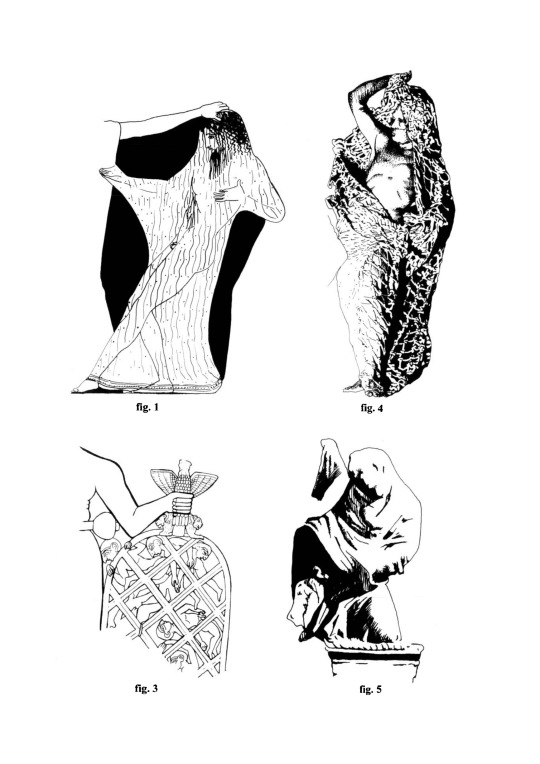


Le filet, un leitmotiv dans l'Orestie d'Eschyle [Ktèma, 2002], Monique Halm-Tisserant
#agamemnon#the oresteia#l'orestie#aeschylus#oresteia#literature#art#Francesco Queirolo#john flaxmann#tant#did i make some edits because the numbering was all over the place? yes#was i too lazy to translate the sources? also yes
34 notes
·
View notes
Text

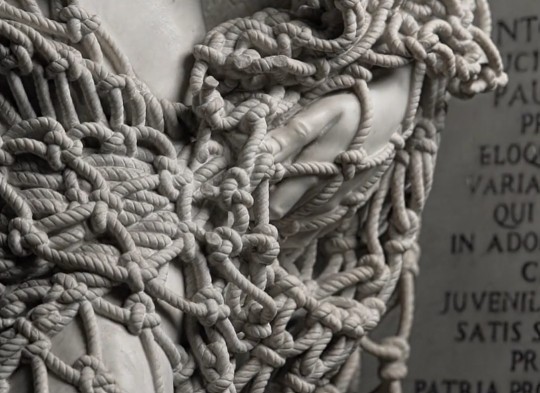
Il disinganno, Francesco Queirolo (Napoli)
10 notes
·
View notes
Text

Disillusion
Francesco Queirolo
15 notes
·
View notes
Text



sculpture by francesco queirolo
8 notes
·
View notes
Text
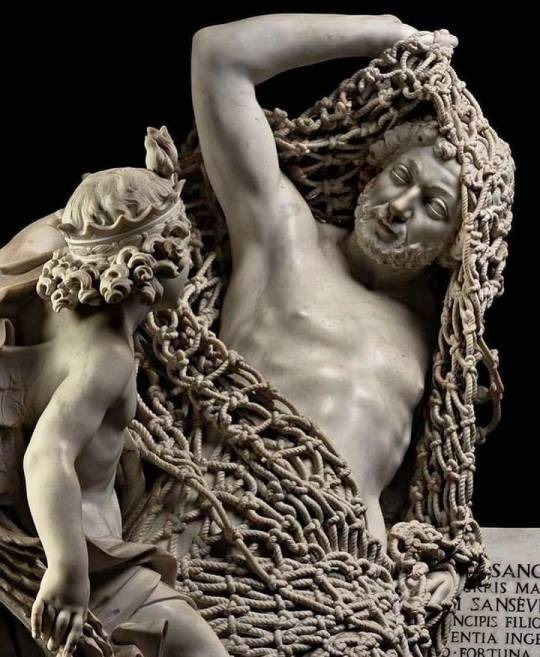
"The Release from Deception" by Italian sculptor Francesco Queirolo - all the rope chiseled from a single block of marble over 7 years (1752-1759.)
#art#artwork#francesco queirolo#the release from deception#sculpture#marble sculpture#masterpiece#classic art
28 notes
·
View notes
Text

Francesco Queirolo - Desengaño (1757)
#cuerpo#Red#esculpture#escultura#estatua#Mármol#Francesco Queirolo#aesthetic#light academia#cottagecore
5 notes
·
View notes
Photo



La capilla de San Severo en Nápoles está llena de obras de arte increíbles, como la escultura de Francesco Queirolo que representa la desilusión.
La red está esculpida en mármol.
Un trabajo infinito.
#art#arte#francesco queirolo#naples#napoles#marble#marmol#sculpture#escultura#disillusion#desilusion
10 notes
·
View notes
Text
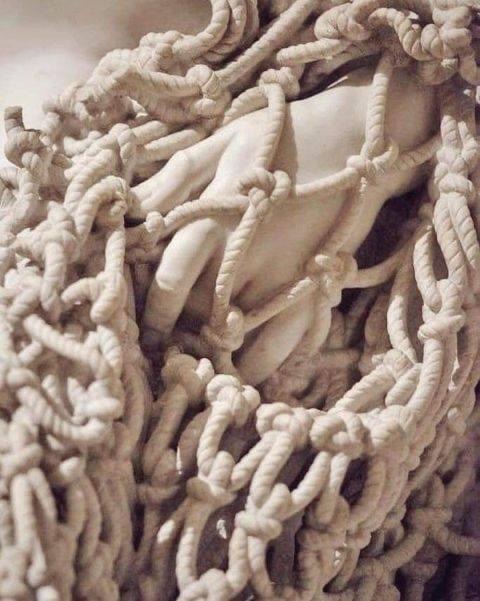
Il Disinganno (qui un dettaglio) è una rappresentazione allegorica della possibilità, per ogni essere umano, di liberarsi dal peccato, simboleggiato dalla rete, grazie all'intelletto, che assume l'aspetto di un putto, scolpita da Francesco Queirolo (Genova, 1704 – Napoli, 1762) scultore italiano. Il Disinganno si trova presso la cappella Sansevero, Napoli.
3 notes
·
View notes
Text

‘Il Disinganno aka The Release from Deception' (1754) by Francesco Queirolo.
For centuries, sculptors around the world have adopted marble as their medium of choice. In order to both illustrate marble's carving capabilities and showcase their own sculpting skills, these artists often select subjects that require a certain level of expertise. These challenging motifs include anatomical details, dynamic drapery, and, in the case of Il Disinganno, delicate netting. Every piece of this incredible sculpture is carved out of marble, including the carefully crafted knots in the draping net wrapped around the large figure of a fisherman.
Il Disinganno, also known as The Release from Deception, was crafted by Genoese artist Francesco Queirolo in the 18th century. Widely regarded as his pièce de résistance, this sculpture has solidified Queirolo's legacy as one of Italy's leading 18th-century artists.
The Release from Deception:
The Release from Deception depicts a scene that is both biblical and allegorical. It features two subjects: an angel and a fisherman. The angel stands on a globe as he untangles the man from a net and floats above exquisite drapery.
BIBLICAL MEANING:
According to the Museo Capella Sansevero (“Sansevero Chapel Museum”) the net symbolizes sin. As the angel sets the man free, he rids him of his wrongdoings and introduces him to the Bible, which rests at his feet. In order to emphasize the idea of liberation, Queirolo adorned the open pages of the book with a Latin passage that reads: “I will break thy chain, the chain of the darkness and long night of which thou art a slave so that thou might not be condemned with this world.”
SECULAR SYMBOLISM:
In addition to religious undertones, the sculpture incorporates secular symbols. For example, the flame on the angel's head represents human intellect, while the globe signifies worldly passions. These elements coincide with Raimondo’s dedication to his father, which explores the idea of “human fragility, which cannot know great virtues without vice.”
According to the museum, the sculpture also appears to denote aspects of freemasonry—a fraternal organization. The Bible, for example, serves a dual purpose, as an open book is one of the three “great lights” of Masonry. Similarly, the concept of light and dark—explored by the aforementioned biblical passage—”appears to be a clear reference to Masonic initiation, where those being initiated would enter wearing a ritual blindfold to open their eyes to the new light of the Truth.”
The Marble Net:
While its symbolism is compelling, it is The Release from Deception‘s sculptural details—namely, its exquisitely carved net—that has captivated viewers for centuries. Though, at first glance, this structure appears to be composed of intertwined rope, a closer look reveals that the open-mesh material is made entirely from a single block of marble.
It reportedly took Queirolo seven years to fabricate this marble net, which he crafted without a workshop, apprentice, or other form of external assistance. The Sansevero Chapel Museum notes that this is because even the most specialized sculptors “refused to touch the delicate net in case it broke into pieces in their hands.”
The Sansevero Chapel:
Queirolo completed The Release from Deception in 1754. It was commissioned by Raimondo di Sangro, an Italian nobleman, and was intended to adorn the recently reconstructed Sansevero Chapel in Naples.
Built by John Francesco di Sangro in the late 16th century, the chapel became a family burial site in 1613. To memorialize those laid to rest on site, living family members would commission contemporary sculptors to design tributes to the dead. The Release from Deception was created to honor Raimondo's father: Antonio di Sangro, the Duke of Torremaggiore.
Other Masterpieces in the Sansevero Chapel:
Believe it or not, The Release from Deception is not the only highlight of the Sansevero Chapel. Within its walls are 30 other works of art, including two prominent pieces: The Veiled Christ (1753) by Giuseppe Sanmartino and The Veiled Truth (1750) by Antonio Corradini.
#18th century#marble sculpture#the release from deception#Francesco Queirolo#Il Disinganno#biblical#allegorical#angel#fisherman#fisherman's net#italian artist#italian sculptor#1754#sansevero chapel museum#naples#italy#naples italy
2 notes
·
View notes
Text
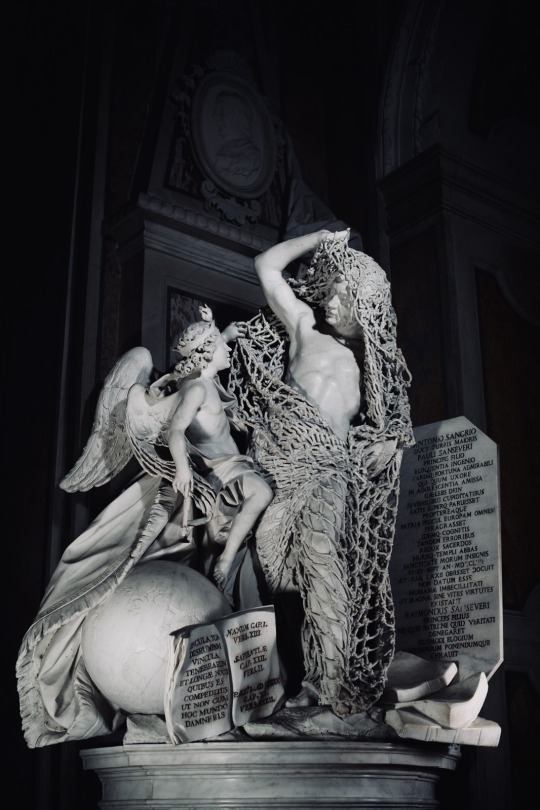
‘Release from Deception (Il Disinganno),’ (1752–1759),
Francesco Queirolo (1704-1762),
Marble, Height 195 cm,
Cappella Sansevero, Naples.
#art#statue#sculpture#release from deception#Il disinganno#francesco queirolo#marble#marble art#italian art#cappella sansevero#naples
0 notes
Text
Non c'è corda in questa immagine. Questo è scolpito da un unico blocco di marmo.
L'artista ha dedicato 7 anni della sua vita alla scultura.
Si chiama "la liberazione disinganno", opera dello scultore italiano Francesco Queirolo nel 1759.
Forse la più grande prova di pazienza nella storia dell'arte - e non è stato commesso un solo passo sbagliato nel marmo.

Fonte:
Arte Bellezza Conoscenza
Silvana Ardemagni
18 notes
·
View notes
Text

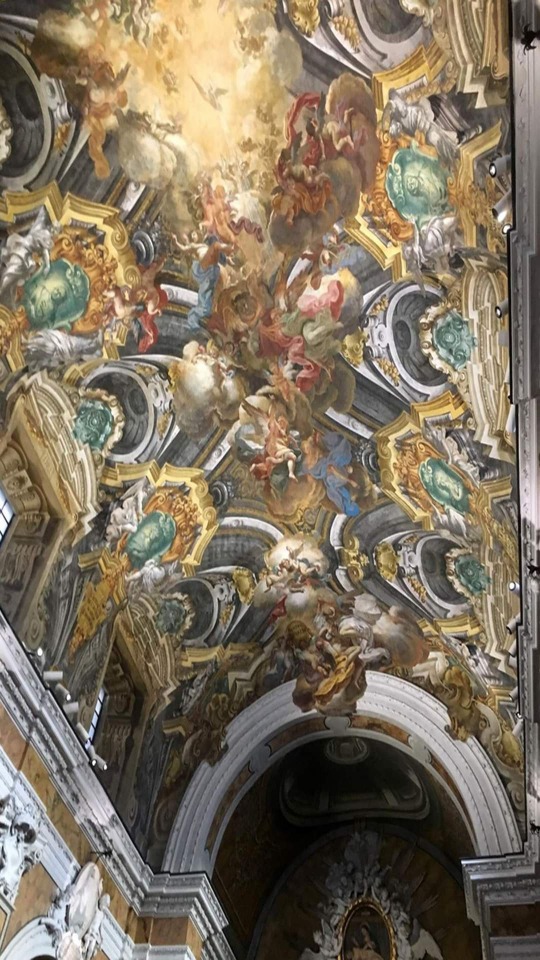

Cappella San Severo (Naples, Italy); (fresco by Francesco Maria Russo,1749.)


- Deposizione (Francesco Celebrano & Paolo Persico. XVIII century)

- Pudicizia (Antonio Corradini, 1752)

- Sincerità (Francesco Queirolo, 1754-55)
#naples#italy#artedit#photography#architecture#art history#baroque#art#italian artist#cappella san severo#1700s art#sculpture#fresco#museum#italian art#italian architecture#baroque style#baroque architecture#napoli#chapel san severo#allegory#aesthetic#baroque art#baroque church#frescoes#beautiful#travel
58 notes
·
View notes
Text

"La libération de la tromperie" du sculpteur italien Francesco Queirolo - achevé en 1759 après 7 ans de travail. Il représente un pêcheur libéré de son filet par un ange, allégorique de l'homme libéré de ses péchés.
L’œuvre était si complexe que le philosophe du XVIIIe siècle Giangiuseppe Origlia l’a décrit comme « l’épreuve dernière et la plus éprouvante à laquelle peut aspirer la sculpture en marbre ».
Queirolo a travaillé seul sur son magnum opus, sans assistant ni même atelier. Même d’autres sculpteurs refusaient de toucher le filet délicat au cas où il se briserait en morceaux entre leurs mains.
Le chef-d'œuvre est conservé à la chapelle Sansevero à Naples, avec plusieurs autres miracles du marbre.
11 notes
·
View notes
Text
NAPOLI - - Cappella di San Severo--
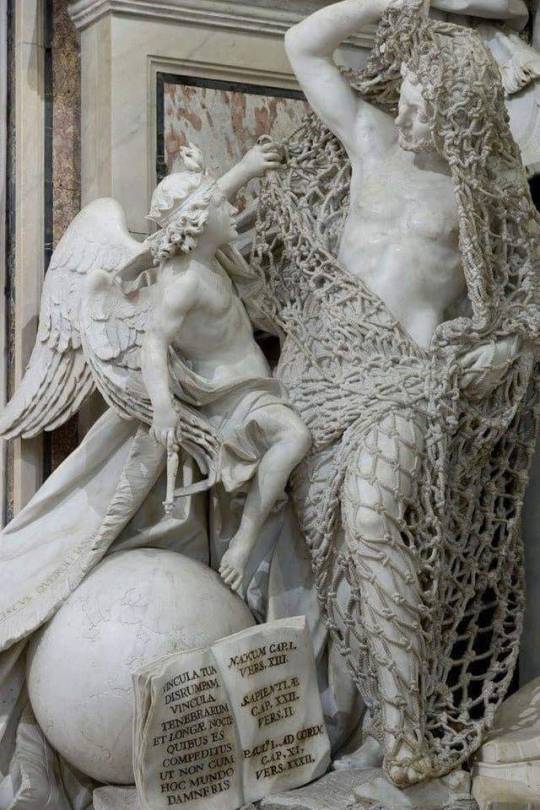
Francesco Queirolo ha impiegato 7 anni per realizzare questa scultura, la rete è anch'essa in marmo, per quanto incredibile possa sembrare...
7 notes
·
View notes